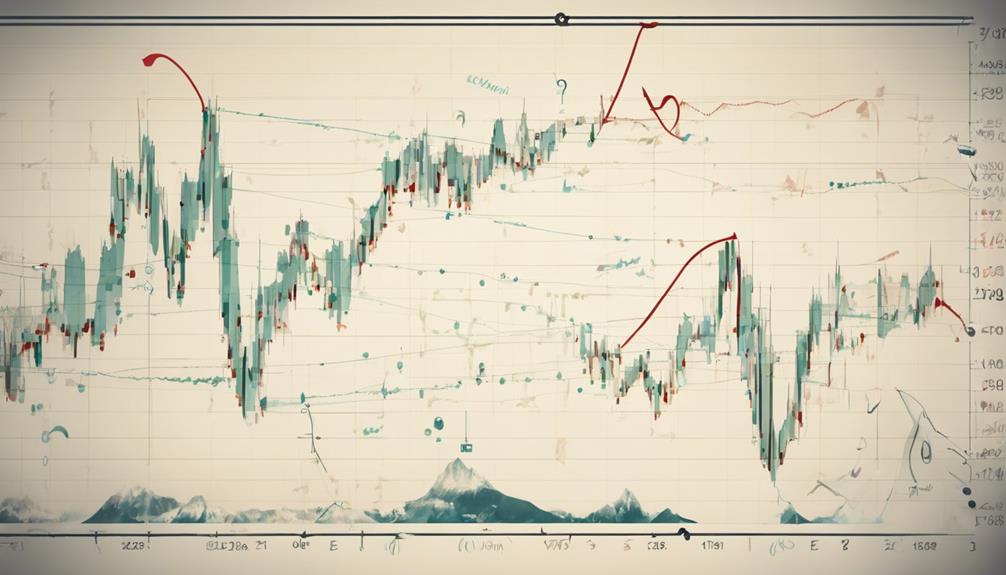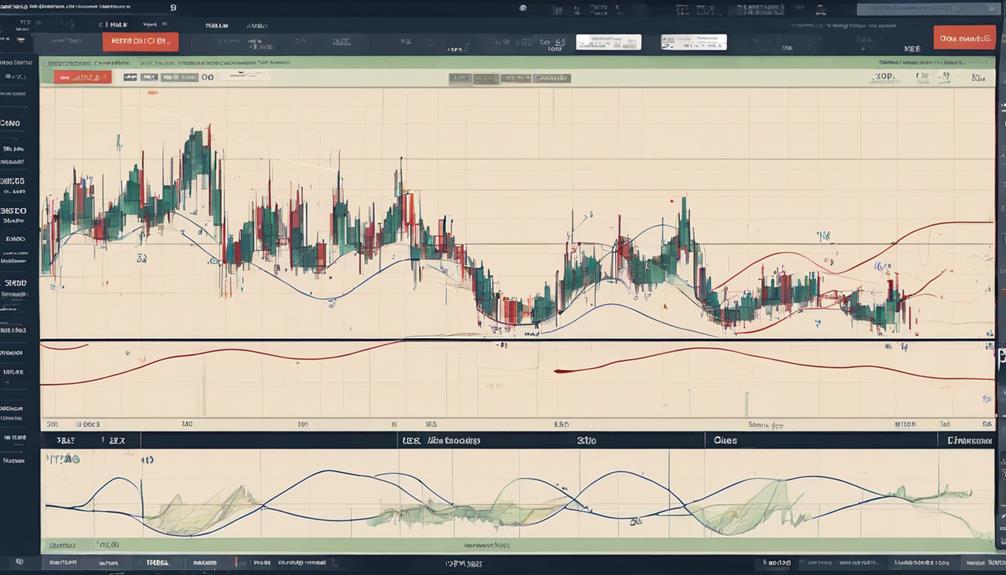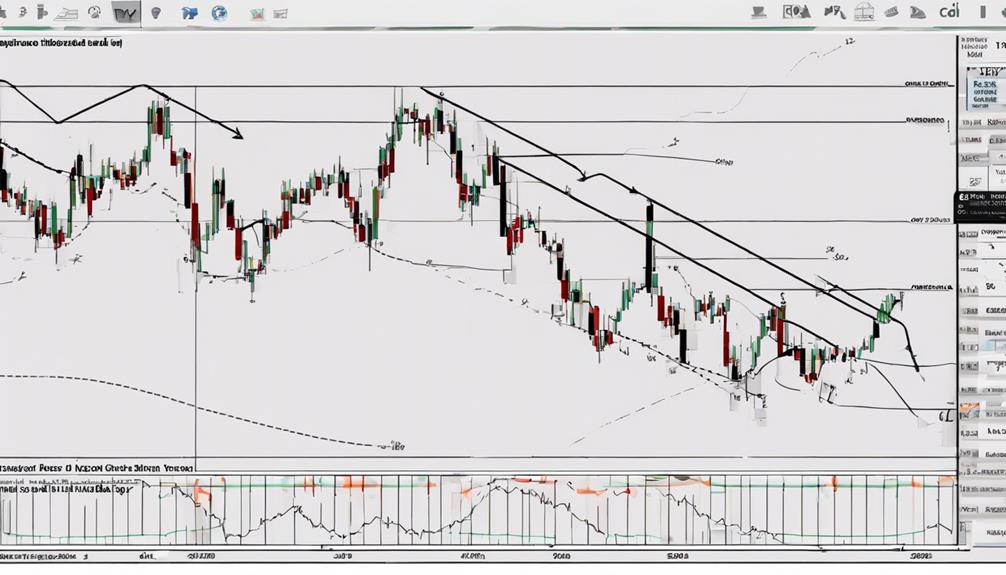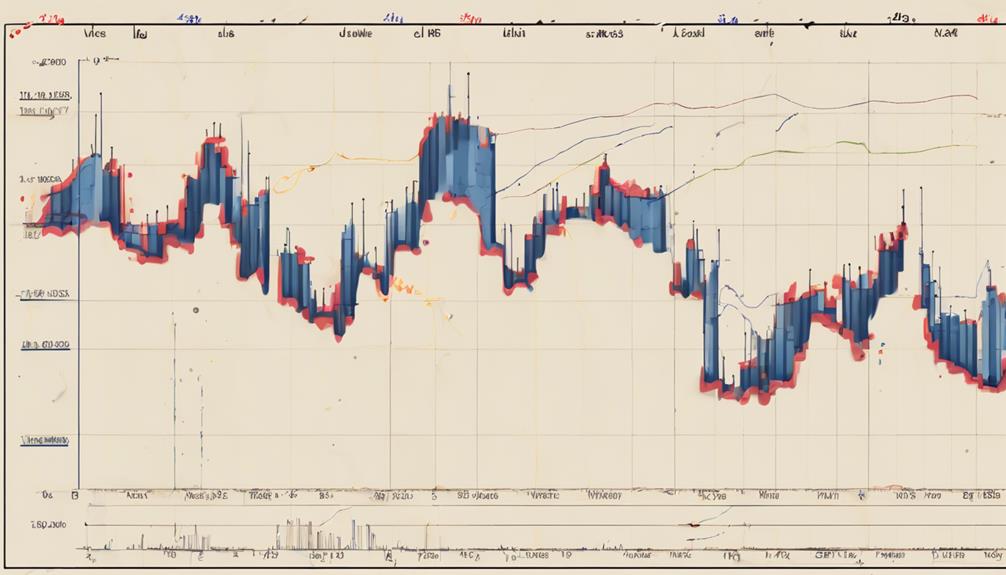Elliott Wave Theory serves as a fundamental tool in the arsenal of traders and analysts, offering a methodical approach to deciphering the complexities of market behavior.
Its ability to decode wave patterns and offer insights into potential market movements is unparalleled. By integrating Fibonacci ratios, this theory aids in not only identifying optimal entry and exit points but also in effectively managing risk.
The strategic advantage it provides in anticipating market reversals and understanding market psychology is indispensable in navigating the dynamic landscape of financial markets.
Significance of Elliott Wave Theory
The importance of Elliott Wave Theory in financial markets lies in its ability to provide traders with a systematic approach to identifying trends and potential turning points with precision and accuracy. Elliott Wave Theory, developed by Ralph Nelson Elliott in the 1930s, is a technical analysis tool that categorizes price movements into impulsive waves that move with the trend and corrective waves that move against the trend. By applying Elliott Wave Theory, traders can gain a deeper understanding of market psychology and structure.
The theory helps traders analyze market cycles and patterns, offering insights into potential price movements. Traders can use wave counts to anticipate trend reversals and plan their trades accordingly. Corrective waves provide opportunities for traders to enter positions at favorable prices, while impulsive waves offer confirmation of the underlying trend strength. Additionally, incorporating Fibonacci ratios into Elliott Wave analysis allows traders to identify precise price levels for setting profit targets and stop-loss orders. Overall, the significance of Elliott Wave Theory lies in its ability to enhance traders' analytical capabilities and improve decision-making in the dynamic financial markets.
Identifying Market Trends

Applying Elliott Wave Theory enables traders to effectively discern market trends by meticulously analyzing wave patterns, distinguishing between impulse waves indicating the trend direction and corrective waves representing counter-trend movements. By understanding these wave patterns, traders can accurately identify the prevailing market trends. This knowledge is crucial for making informed decisions on when to enter or exit trades, thus enhancing risk management and position sizing strategies.
Recognizing market trends through Elliott Wave Theory not only aids in minimizing potential losses but also in maximizing profits. Traders who can interpret these patterns have an edge in trading profitability and decision-making. By utilizing Elliott Wave Theory for trend analysis, traders gain a deeper insight into market movements and are better equipped to navigate the complexities of the financial markets.
This analytical approach forms a solid foundation for traders seeking to optimize their trading strategies and improve their overall performance.
Predicting Price Movements

Utilizing Elliott Wave Theory allows traders to anticipate future price movements with a structured framework based on repetitive wave patterns in the market. This predictive capability is crucial for making informed trading decisions.
Here are three key aspects of predicting price movements using Elliott Wave Theory:
- Identification of Repetitive Wave Patterns: By recognizing the recurring nature of wave patterns, traders can forecast potential market movements with greater accuracy. Understanding the sequence of waves enables the prediction of future price trends and corrections.
- Utilization of Fibonacci Ratios: Incorporating Fibonacci ratios in Elliott Wave analysis helps traders pinpoint crucial support and resistance levels. These levels serve as significant areas where price action is likely to stall or reverse, aiding in identifying optimal entry and exit points.
- Establishing Price Target Levels: Elliott Wave Theory assists traders in setting realistic price target levels based on wave counts. By defining clear objectives, traders can effectively manage their trades and establish risk management strategies to mitigate potential losses.
Enhancing Trading Decisions

Enhancing trading decisions involves leveraging insights from Elliott Wave Theory to strategically position oneself in the market based on wave patterns and Fibonacci ratios.
Traders can identify potential entry and exit points by analyzing wave structures and Fibonacci ratios, which aid in making informed decisions about risk management and setting stop-loss orders.
Understanding market reversals through Elliott Wave Theory allows traders to adjust their position sizes accordingly during different wave patterns, enhancing their overall risk management strategies.
Moreover, by delving into wave counts and patterns, traders can gain valuable insights into market psychology, enabling them to navigate price movements with a structured approach.
This comprehensive understanding of wave patterns and Fibonacci ratios not only improves decision-making processes but also enhances trading strategies, providing traders with a competitive edge in the dynamic financial markets.
Improving Market Insight

Within the realm of financial analysis, gaining a deeper understanding of market dynamics is essential for making informed trading decisions. When utilizing the Elliott Wave principle to enhance market insight, several key aspects come into play:
- Identification of Patterns: The Elliott Wave Theory enables traders to recognize various patterns within market data, distinguishing between motive waves that move in the direction of the trend and corrective waves that move against it. This differentiation aids in understanding the underlying market sentiment and potential future price movements.
- Utilization of Fibonacci Ratios: Integrating Fibonacci ratios into Elliott Wave analysis provides traders with precise levels of support, resistance, and price targets. By aligning these ratios with wave counts, traders can better anticipate where market prices may reverse or continue their trend, enhancing decision-making accuracy.
- Enhanced Technical Analysis Tools: Applying the Elliott Wave Theory enhances the effectiveness of technical analysis tools by providing a structured framework for interpreting market behavior. This structured approach improves market insight by offering a systematic method to analyze price action and forecast future trends.
What Are the Benefits of Using Elliott Wave Theory in Technical Analysis?
Elliott wave theory is essential in technical analysis as it helps identify market trends and predict future price movements. By understanding wave patterns and market psychology, traders can make more informed decisions. The theory also provides a framework for setting profit targets and stop-loss levels, improving trading strategies.
Frequently Asked Questions
What Is the Significance of the Elliott Wave Theory?
The Elliott Wave Theory holds significance in the financial markets due to its ability to identify market trends, forecast price movements, and provide a structured framework for analyzing market dynamics. Traders utilize it to make informed trading decisions.
What Are the Practical Applications of Elliott Wave Theory?
In practical application, Elliott Wave Theory aids traders in identifying market trends, predicting price movements, and strategically managing risk through wave pattern analysis. This structured framework guides entry and exit decisions, enhancing trading strategies.
What Does Elliott Wave Theory Reference?
Elliott Wave Theory references a repetitive pattern of five-wave impulsive movements and three-wave corrective patterns in market price movements. It identifies main trend waves and corrective waves, utilizing Fibonacci ratios to determine price targets and support/resistance levels accurately.
What Does Elliott Wave Analysis Look For?
Elliott Wave analysis looks for specific wave patterns in market price movements. It identifies impulse waves indicating trend direction and corrective waves for temporary reversals. This analysis focuses on the 5-3 wave pattern to anticipate market movements accurately.
Conclusion
In conclusion, Elliott Wave Theory serves as a powerful tool for traders and analysts in understanding market trends, predicting price movements, and enhancing trading decisions.
Like a skilled navigator using a compass to navigate through turbulent waters, Elliott Wave Theory provides a structured framework for interpreting market psychology and anticipating potential price movements.
Its application can greatly improve market insight and help traders make informed decisions in the ever-changing landscape of financial markets.
